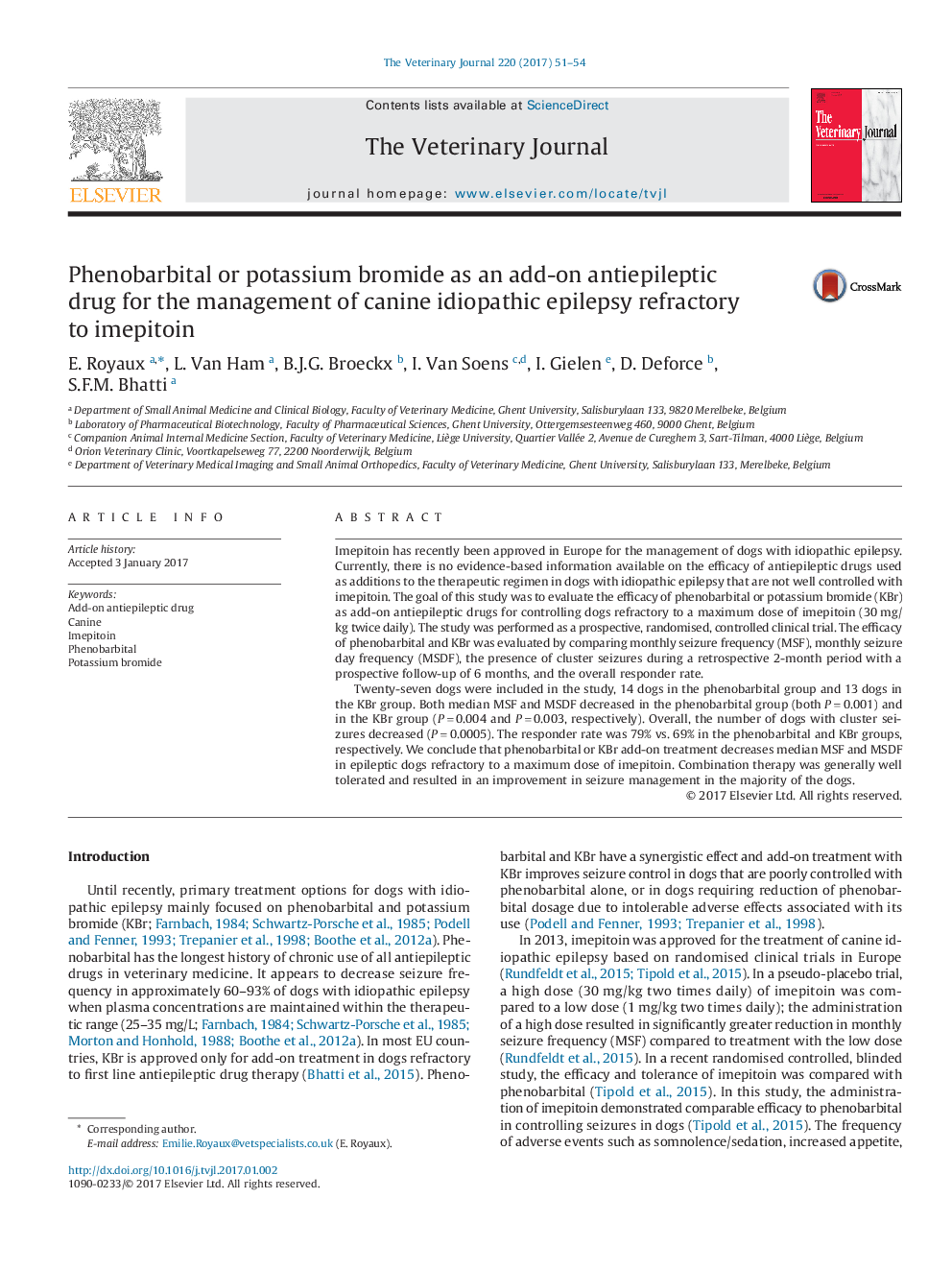| Article ID | Journal | Published Year | Pages | File Type |
|---|---|---|---|---|
| 5544857 | The Veterinary Journal | 2017 | 4 Pages |
â¢Twenty-seven dogs refractory to a maximum dose of imepitoin (30âmg/kg twice daily) were enrolled.â¢Phenobarbital or potassium bromide add-on treatment decreased seizure frequency.â¢Combination therapy was well tolerated.
Imepitoin has recently been approved in Europe for the management of dogs with idiopathic epilepsy. Currently, there is no evidence-based information available on the efficacy of antiepileptic drugs used as additions to the therapeutic regimen in dogs with idiopathic epilepsy that are not well controlled with imepitoin. The goal of this study was to evaluate the efficacy of phenobarbital or potassium bromide (KBr) as add-on antiepileptic drugs for controlling dogs refractory to a maximum dose of imepitoin (30âmg/kg twice daily). The study was performed as a prospective, randomised, controlled clinical trial. The efficacy of phenobarbital and KBr was evaluated by comparing monthly seizure frequency (MSF), monthly seizure day frequency (MSDF), the presence of cluster seizures during a retrospective 2-month period with a prospective follow-up of 6 months, and the overall responder rate.Twenty-seven dogs were included in the study, 14 dogs in the phenobarbital group and 13 dogs in the KBr group. Both median MSF and MSDF decreased in the phenobarbital group (both Pâ=â0.001) and in the KBr group (Pâ=â0.004 and Pâ=â0.003, respectively). Overall, the number of dogs with cluster seizures decreased (Pâ=â0.0005). The responder rate was 79% vs. 69% in the phenobarbital and KBr groups, respectively. We conclude that phenobarbital or KBr add-on treatment decreases median MSF and MSDF in epileptic dogs refractory to a maximum dose of imepitoin. Combination therapy was generally well tolerated and resulted in an improvement in seizure management in the majority of the dogs.
